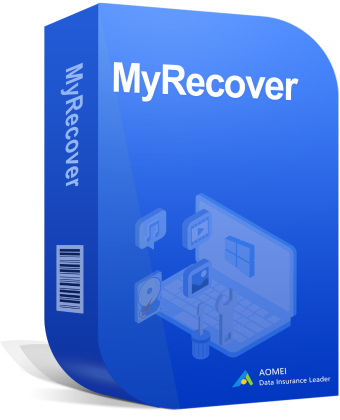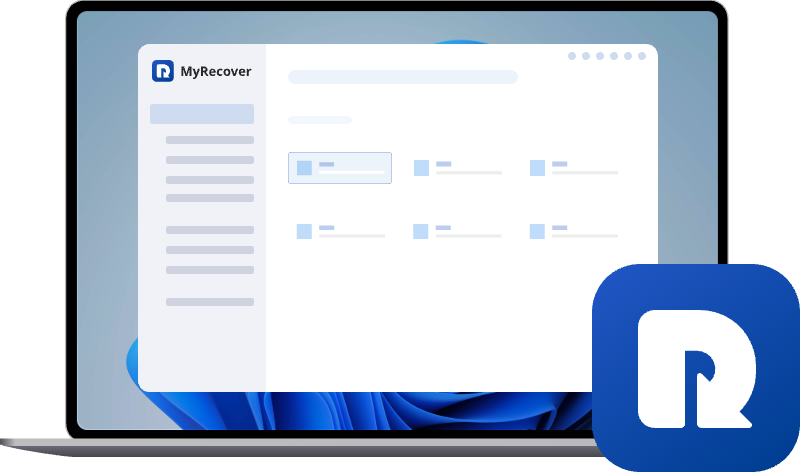Desktop Suddenly Empty? Recover Missing Files Instantly on Windows
Is your desktop suddenly empty, with icons, files, or folders missing out of nowhere? This article will guide you through the methods to recover disappeared files from desktop and resolve the "desktop suddenly empty" problem, providing a sense of direction for those facing this situation.
My Desktop Suddenly Empty!
My desktop suddenly disappeared a few days ago. I was doing nothing unusual but all of my icons are gone except for my icons in the taskbar. This changed desktop is very strange.
Does anyone know how I can recover my desktop? Can you give me a clue how to troubleshoot and correct? I don't understand much of the computer technical jargon so please talk to me as if I were computer illiterate. I appreciate any and all help.
- Question from Dalchina
It’s really a distressing moment when you boot up your Windows, but find your desktop suddenly empty, no files, no shortcuts, just a blank screen. Whether you're using a Dell, HP, or Lenovo PC, this issue can be alarming, especially if you store important documents on your desktop. Here are the command reasons why desktop might suddenly empty on Windows 10 or Windows 11:
- Folder moved to other folders or deleted by mistake,
- Accidentally changed desktop icon settings to unchecking "show desktop icons",
- The computer might log you into a temporary profile after Windows update or system glitch,
- Tablet Mode can change the desktop layout drastically,
- If the Windows Explorer process crashes or fails to restart properly, it may result in blank desktop,
- Damaged Windows system files due to improper shutdowns, disk errors, or failed updates.
Fortunately, there are several methods that can be used to recover lost files from desktop and troubleshoot the "desktop suddenly empty" problem. Let's explore more details.
How to Recover Lost Files from Desktop on Windows
Before fixing this issue, ensuring data security is the top priority, whether the files were deleted or hidden. This section will provide two methods to recover lost data from desktop. If you have a backup, you can restore files directly from it. If not, professional data recovery software can also help you retrieve important files.
Recover Desktop Files with File History
File History is a built-in Windows backup tool, it can automatically backup all your libraries including Documents, Pictures, Videos, as well as any libraries you have added to. If you’ve enabled File History on Windows 10 and 11, and backed up the Desktop folder, you can restore previous versions of Desktop folder.
Step 1. Type "Restore your files with File History" in the Start menu and open it.
Step 2. Select the Desktop folder and choose a desired version based on the backup time.
Step 3. Click the green "Restore" button to return the desktop to original state.
- ★Tips:
- File History only works if it was enabled before the files were lost.
- If you have other backups similar to File History, you can also restore files directly from these backups.
Use MyRecover to Recover Lost Desktop Files
If no backups like File History are available, professional data recovery tools like MyRecover are the last resort. It can scan all drives on your computer and provide an opportunity to recover lost folders and files. MyRecover only reads files during the recovery process without writing any data. Even if your files are not completely lost, you don’t need to worry that it will overwrite the original data.

- Easy to use, no technical skills required.
- Supports a wide range of data loss scenarios (deletion, formatting, os crash, etc).
- "Deep Scan" for recently deleted files while "Deep Scan" for thoroughly searching lost data from formatted, corrupted, or inaccessible drives.
- Works on all modern windows versions like Windows 11, 10, 8, 7 and Server 2025, 2022, 2019, 2016.
- Supports over 1000+ file types recovery, including documents, photos and videos (JPG, PNG, MP4, etc.), emails, compressed files, and more.
Step 1. Download and install MyRecover on your computer from secure channel, avoid installing it on the drive with lost files.
Step 2. Launch it and select the desktop folder or the C drive to scan for lost files, then click "Scan".
Step 3. Choose files you want to recover from the recoverable lists and click "Recover". If the number of scanned files is too large, you can use the filtering function in the upper right corner to quickly find the files you want.
Step 4. Select a location different from the original one to save the recovered files.
Once the process is finished, you can check the recovered files by clicking "Browse" or the destination folder path.
How to Fix Desktop Suddenly Emptied Issue on Windows 10/11
Once your files are recovered, it’s time to fix the desktop suddenly emptied issue to restore your Windows desktop to original state. This section provides 4 solutions to help you restore computer desktop. Let's explore them one-by-one.
Solution 1. Unhidden Desktop Icons
In many cases, desktop icons disappearing completely is simply because you accidentally turned off "Show Desktop Icons". Before considering other more complicated methods, check first whether your desktop icons are hidden.
Step 1. Right click the blank space on the desktop and select "View".
Step 2. Check the "Show desktop icons" option. Then the icons on the desktop will reappear again.
Solution 2. Turn off the Tablet Mode
Windows 10 and 11 includes a Tablet mode designed to help users optimize the appearance and behavior of both apps and the Windows shell. It may hide the desktop, causing desktop icons to be covered. Follow below steps to disable it.
Step 1. Open "Settings" and select "System" > "Tablet mode".
Step 2. Choose "Use desktop mode" in the dropdown menu under "When I sign in". To prevent Tablet mode from hiding desktop icons again, you can also turn off the "Hide app icons/Automatically hide the Taskbar in the Tablet mode" options.
Step 3. Restart the computer to check if the icons and files on the desktop get back.
Solution 3. Switch User Account
Sometimes, after a Windows update or system failure, Windows may automatically log you into a temporary user account or another account, which is why you can’t see the desktop icons and files from your original account.
Step 1. Select the Start bar and click the "Account" icon.
Step 2. Click the horizontal three dots and choose a user account you want to switch to.
Step 3. Sign in the correct account, your files and icons on the desktop will be available.
Solution 4. Restart the Desktop Process
If Windows Explorer crashes, the desktop may not display properly. Restarting desktop process can restore a blank or frozen desktop without restarting your PC.
Step 1. Press "Ctrl + Shift + Esc" to open Task Manager.
Step 2. Select the "Windows Explorer" and right click on it, select "End task".
Step 3. Click "File" tab in the left upper corner and select "Run new task". Then enter "explorer.exe" in the run box and press "Enter" to Restart Windows Explorer.
Conclusion
When your desktop suddenly looks empty, don’t panic. It’s often a display issue, profile switch, or recoverable file loss. From built-in solutions like File History to advanced recovery tools like MyRecover, there are multiple ways to restore your desktop files and fix the blank screen problem.
If you want a smoother recovery experience especially in complex cases, MyRecover Professional Edition offers enhanced features and support for severe data loss scenarios, including data recovery from unbootable computer, unlimited data recovery quota.


